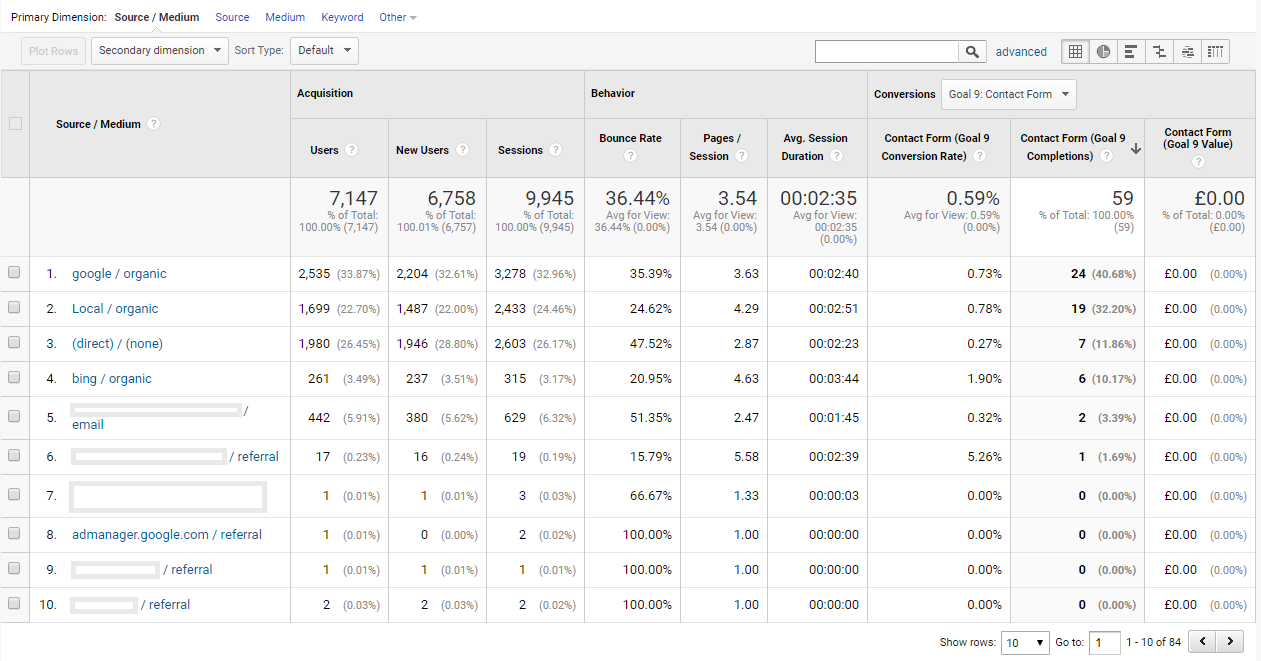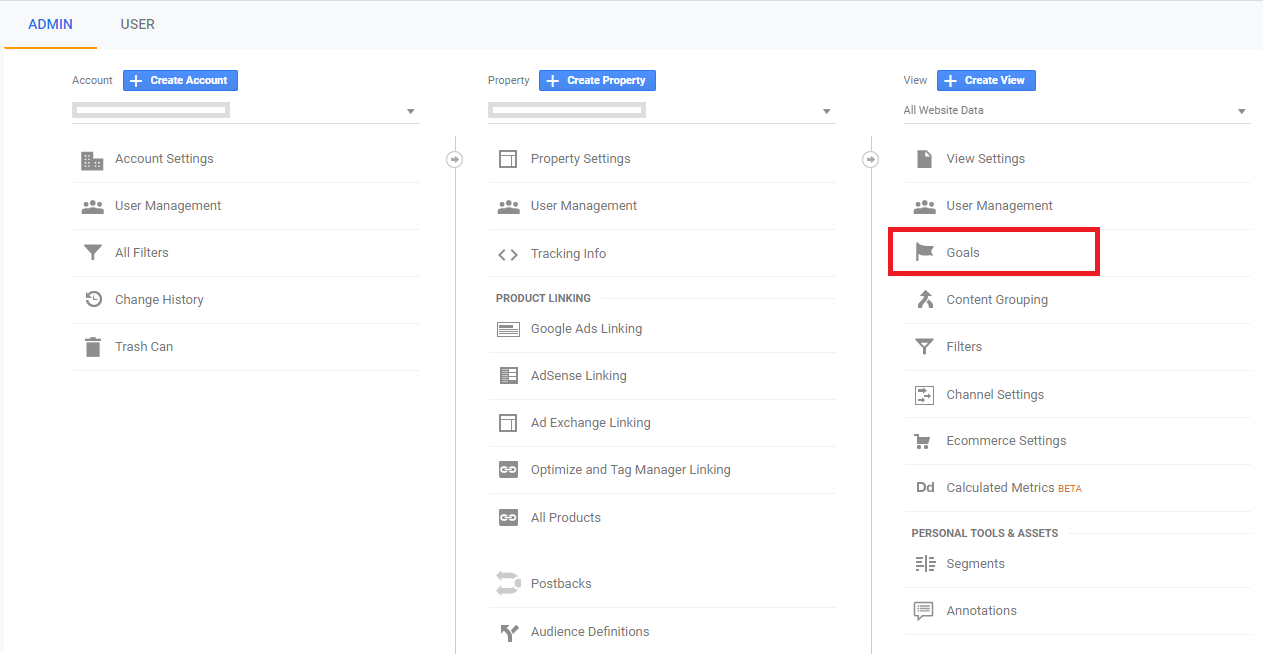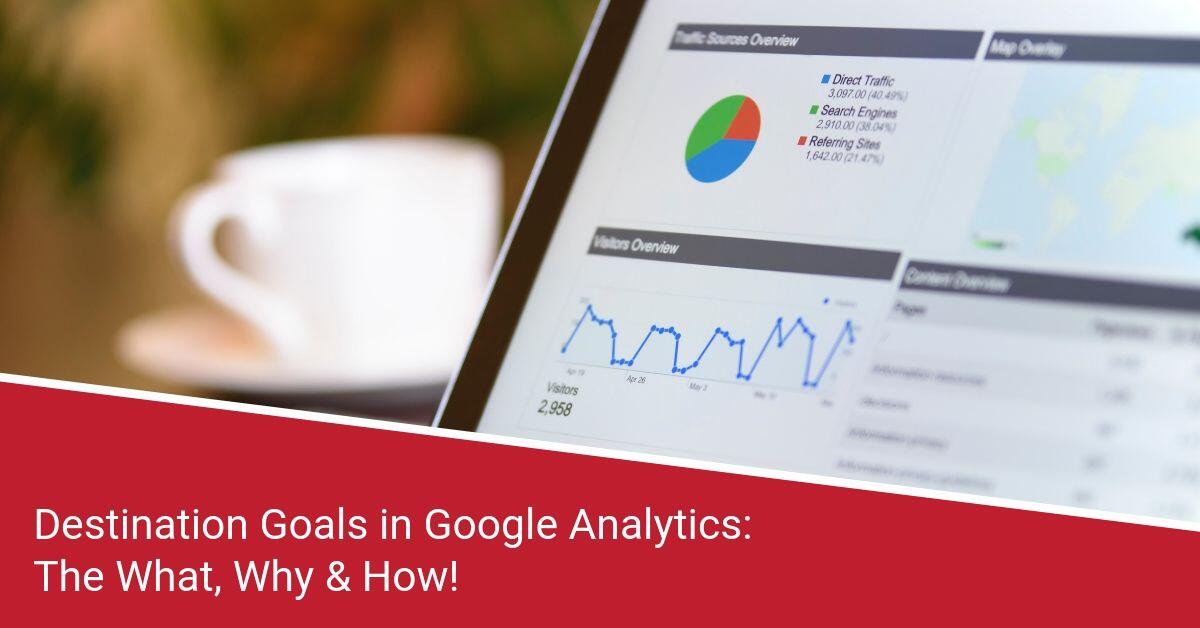There are a number of ways to track different types of performance in Google Analytics. One of the most important is the setup of conversion goals. Many site and business owners don’t activate conversion goals, usually through lack of understanding of what they’re for and / or knowledge of how to set them up.
A destination goal is one of the default goal types available in Google Analytics.
They are, in many cases (depending on how your website is built), relatively easy to setup without requiring any code adjustments on the website. There are unfortunately also many situations where additional setup is required.
Regardless of setup requirements, it’s important that you do aim to set them, as they can provide invaluable insights around important interactions on your website, including contact form submissions, newsletter signups, purchases, category browsing and more.
Remember, Goals aren’t just about the volume of conversions, but understanding what caused them!

How do Destination Goals Work?
Google Analytics Destination Goals work by recording a conversion whenever a website visitor reaches a certain page on your website.
All of your web pages do of course fire page views when viewed, but certain pages may not be generally accessible until specific actions have occurred. A common example would be the “Thank You” page that a visitor is directed to after completing a form, or buying something on your website
An alternative method used by some websites is to track clicks on the “Submit” button on contact forms as the conversion. However, a submit button may be clicked multiple times if the form is filled out with errors, which will give you the wrong number of actual conversions
Tracking of the button click may also require knowledge of Tag Manager tools or knowledge of coding.
What can I use Destination Goals for?
Destination goals can be used for a variety of circumstances. Rather than just recording when a single page has been visited, you have the ability to broaden that reach to an entire set of pages. Below are a few examples of the most common uses.
Confirmation Pages
The quickest destination goal to set up. A page that the visitor reaches when they have completed an action and are directed to the page. This page is usually a “Thank You” or “Successfully Submitted” kind of page, to inform the visitor that the action they performed was successful. These types of goals are ideal for form submissions, purchases through a checkout, newsletter signups, registration for forums, or any single action you would like tracked on your website.
Key Promotion Pages
If you plan to run limited time promotions or events through your website, destination goals can be a great way to get an idea of how well those key promotion pages perform.
Understanding how people got to those promotion pages, how often they got there etc can help you further develop those pages for more signups.
Such Goals can also tie in with goal funnels to give you even greater levels of measurement, such as tracking who visited a promotion page and completed a purchase in a single visit.
Website Categories / Sections
Sometimes one page isn’t quite enough to determine value. Broader destination goals are available, by using just part of a URL within the goal setup, to cover an entire category of pages on your website.
If for example, you are selling men’s clothing, it’s possible to fire the goal on any page that begins with “/mens-clothing/” on the website. If that’s too broad, you may just be interested in those visitors who browsed your range of tuxedos, in which case “/mens-clothing/tuxedos/” can be used to narrow down the list of pages that the goal will complete on.
This is particularly useful if you’re launching a new range of products or services, and want to see at a glance what drives users to those pages.
Setting up a Destination Goal
Setup of Destination Goals can be setup via the Admin Section of Google Analytics, selecting Goals within the View column.

Follow the steps on screen, giving your goal a name, selecting a goal type and detailing the page on which you’d like your goal to fire.
Always remember to verify and test your Google Analytics Goals to ensure they work correctly!
And that’s it, you will now have a working goal that can be used to record a destination page in Analytics. Knowing how often and in what volume someone successfully signs up or makes a purchase is invaluable knowledge to have when growing your website, so be sure to track as much as useful information as possible with your tracking tools.





